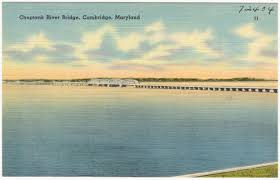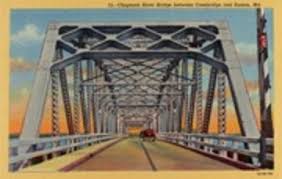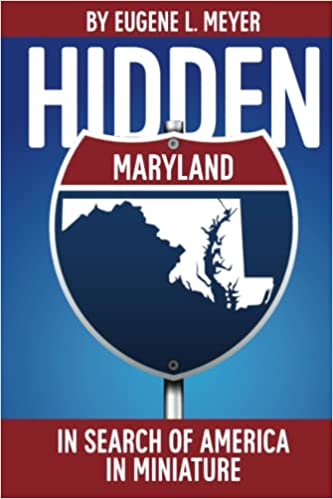A Bridge in Time
The collapse of the Francis Scott Key Bridge over the Patapsco River — a crucial link on the east side of the Baltimore Beltway and the way in and out of the Port of Baltimore — has dredged up not only issues of bridge safety, reconstruction and the tragedy that cost lives and treasure when the container ship Dali collided with the structural piers that could not withstand the collision.
It has also triggered a discussion of the iconic bridge’s very name. Francis Scott Key was, after all, not only the author of the verse that was eventually set to music as our national anthem, “The Star Spangled Banner.” The man who was inspired by the flag’s withstanding the British bombardment in 1814 is, by today’s standards, seen as a controversial figure. He was a slave holder who once defended a free Black man’s rights but also, as U.S. Attorney for the District of Columbia, prosecuted rebellious slaves who challenged the institution.
Consequently, a consortium of civil rights groups has urged the replacement bridge carry a new name, that of Parren J. Mitchell, a Black Baltimorean who was Maryland’s first African American congressional representative. Yet, the modern lens through which Key is now judged, raises even more tantalizing questions: Washington and Jefferson were both slave holders. Should the nation’s capital be renamed? And what about the Jefferson Memorial by the Tidal Basin?
Leaving aside such foundational questions, there is another span on Maryland’s Eastern Shore whose name memorializes a figure much closer to our time: The Frederick C. Malkus Bridge over the Choptank River connects Talbot County to the north with Dorchester County to the south. Historically, it also marked a cultural divide between the upper shore and lower shore. The counties below the Choptank were dry, and even more resistant to desegregation.


The bridge was built during the 1930s as part of President Franklin D. Roosevelt’s pump-priming effort to end the Great Depression by putting people back to work. Among them was Malkus, who earned $13 a week wrapping wire around steel bars. He would go on to become the long-serving state senator from Dorchester. With other Eastern Shore colleagues, he voted against the state law, which, in tandem with federal regulation, ended segregation in public accommodations.
Cambridge, the Dorchester County seat, was the site of the longest deployment of federal troops to keep order since the Civil War, in 1964 and 1967, after Black residents rose up to violently confront the county’s long history of institutional racism. In 1979, as a reporter for The Washington Post, I wrote about the still lingering effects of segregation in the city and county, the blatant racial divide between the white and black sections, black families living in repurposed chicken coops on one side of town while white leaders lived in luxurious riverfront homes on the other. The VFW Post was segregated, and a black Cambridge native, then a teacher in Howard County, and I essentially desegregated the place one night during my stay.
Reflecting on the town’s racial troubles, Malkus echoed the “outside agitators” theme, a common defense heard from white politicians throughout the South. Cambridge, he asserted, has been “misaccused from the beginning. We were in the forefront as far as race relations were concerned,” said Malkus, who made sure his county was exempted from the state statute. :I got more colored friends than most of the so-called liberals.”
Addressing me as a member of the press, he said, “You fellas, all you wanna do is start trouble . You’re trying to start a new fire which fortunately is not going to happen. This town, in my opinion, is gonna stay quiet.”
It took a federal civil rights lawsuit filed by the American Civil Liberties Union a few years later to obtain more representation for Dorchester’s black citizens on the county council.
But there was another story to be told. By now the two-lane drawbridge Malkus had helped build was antiquated and inadequate. The state senator, white-haired and red-faced, was demanding its replacement with a new four-lane span. A curmudgeon considered the dean of the State Senate, Malkus had sponsored the replacement bill. “This time we’re gonna win,” he predicted, “not because they have any great love for us country boys but because the city boys will have a hellova time getting to Ocean City without it.” The new bridge opened in the late 1980s.
Civil rights groups are now suggesting that the Malkus Bridge, along with the Key Bridge, be renamed. That makes sense to me, and there is an obvious candidate. Here’s my modest suggestion: Dorchester County has recently become something of a tourist attraction as the home of Harriet Tubman, who fled from slavery and then returned repeatedly to lead some 70 enslaved residents to freedom. The state has even established a Harriet Tubman Byway. In the middle of the county, you can visit the National Park Service’s Harriet Tubman Underground Railroad Visitors Center. In Cambridge proper, there is the Harriet Tubman Museum,
By 2030, we are promised, Harriet Tubman’s image will grace the $20 bill. That was to have happened by now, before the former president put it on indefinite hold. But there is this:
Ditch the Frederick C. Malkus Memorial Bridge. Dedicate the Harriet Tubman Memorial Bridge.
***
Read more about Cambridge, the Choptank River Bridge and the civil rights history of Cambridge in “A Bridge in Time,” a chapter in my first book, in paperback as Maryland Lost and Found…Again, which is available on Amazon. Click here.
London, Paris, Rome… Detour? Yes! Read about it and more in “Hidden Maryland: In Search of American in Miniature” available n paperback, e-book or audiobook at amzn.to/41CRZEP

Such interesting history – thank you for sharing it! We visited the NPS Harriet Tubman Visitir Center last year.